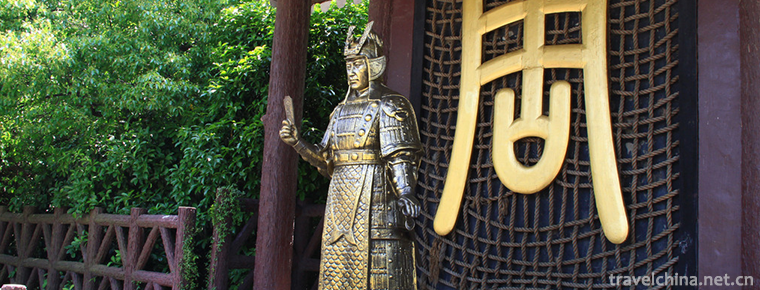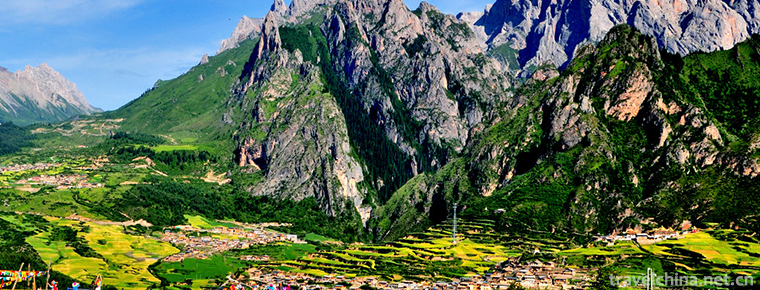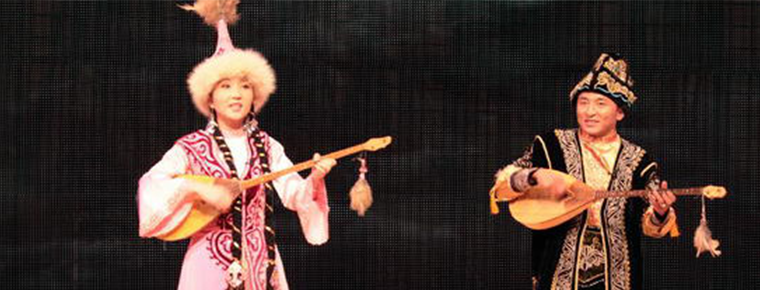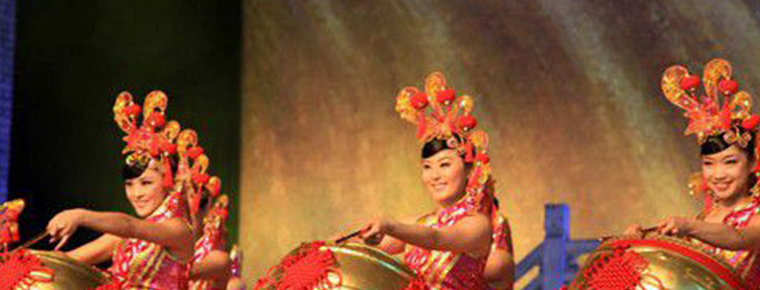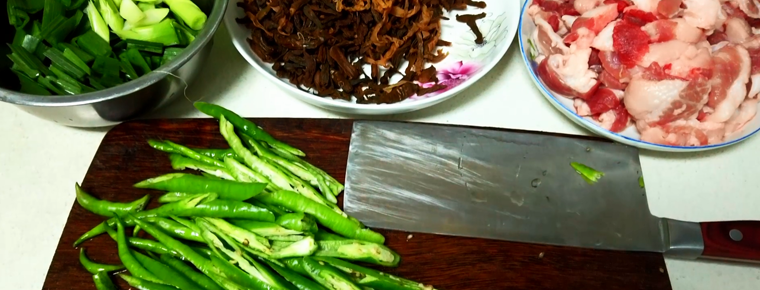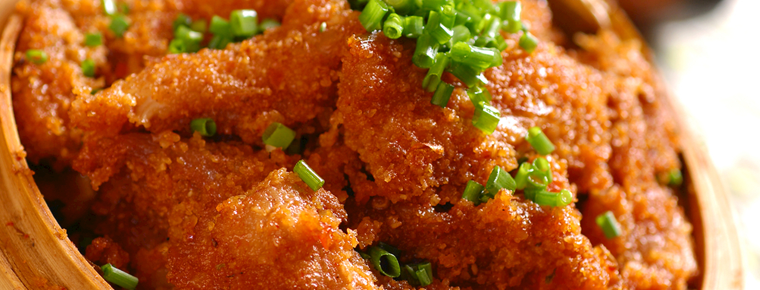Longchang Shipaifang Tourist Area
Longchang Shipaifang Tourist Area
Located in Longchang City, Sichuan Province, China, Longchang Stone Memorial Architecture is a very important type of traditional Chinese architecture. It was rated as a class 4A tourist attraction by the state in 2013. It is a key protection unit of intangible cultural heritage and cultural relics. The existing stone archways in Qing Dynasty can be regarded as the crown of Chinese stone archways. There are 17 stone archways and 4 stone tablets in existence, which are distributed in Beiguan and Nanguan of Longchang city, including 7 Beiguan (Daoguanping), 6 Nanguan (ChunNiuping), and 4 other villages and towns. At present, stone archways are also occasionally seen in other provinces of China, but only the stone archways in Longchang appear on a large scale and in different classifications, with exquisite construction technology, elegant shape, fine carving, well-preserved and far-reaching implications, which are rare in the whole country and fully reflect the outstanding talent and artistic creativity of the ancient working people. It has high value of folklore historical materials and perfect artistic value. On June 25, 2001, Longchang Stone Archway, as an ancient building in Qing Dynasty, was approved by the State Council to be listed in the fifth batch of national key cultural relics protection units.
Historical culture
Longchang Stone Archway Group is located on Chengdu-Chongqing ancient road about 3 kilometers from northwest to southeast of Longchang city. 13 stone archways are located at the end of the street. Each square echoes each other: Longchang Stone Archway Group was built in the 49 years from the eighteenth year of Qing Daoguang (1838) to the thirteenth year of Qing Guangxu (1887). It has experienced four dynasties: Daoguang, Xianfeng, Tongzhi and Guangxu. According to Longchang County Chronicle of Tongzhi thirteen years (1874), there are 33 stone archways in the city. However, after a century and a half of erosion and human destruction, only 13 archways have survived. Among them, there are 5 Dezheng Square, 4 Festival Filial Square, 2 Gongde Square, 1 Baishou Square and 1 Temple Shanmen Square. From north to south, they are respectively: Guo Chen's Festival Filial Square; Yuwang Palace Mountain Gate Square (Piao Chuan'an Liang Tablet); Niushu Mei De Zhengfang; Xiaozi General Square; Liu Guangdi De Zhengfang; Suqing Dezheng Square; Guo Yuluan Gongde Square; Shu Chengyun Hundred Years Square; Festival Filial Square (except the Tyre An Liang Tablet, Tong Ren and Tablet); Li Jishou De Zhengfang; Jue Luo Guo Wang Gongde Square Square.
Seventeen stone archways have 17 moving stories, which are also of practical significance today. There are different inscriptions on the main entrance of each archway. Upper and lower sides, left and right sides are also engraved with relief sculptures which are good at Fang Ming, Li Fang era and symbolize "good", "good", "life". Whether it is merit archway, warning archway, Festival filial piety archway or Baishou archway, they are extremely fastidious in the aspects of construction, sculpture, seal writing, etc. Therefore, the "high", "refined" and "rational" of the stone archway are prominent. "Gao" means that archways should have momentum, "Jing" means exquisite sculpture technology and unique stone, while "Li" means that the characters and patterns carved on the archways have profound ideological connotation, profound culture and philosophy of life. Each of them is carved with vivid figures, flowers and birds, animals and plants and other patterns, which are exquisite in shape and exquisite in sculpture. These memorials were built in the period from the eighteenth year of Daoguang (1838 AD) to the thirteenth year of Guangxu (1887 AD), and went through four dynasties: Daoguang, Xianfeng, Tongzhi and Guangxu. Its architectural format is mostly four pillars, three doors, three eaves, five drops of water, three-bay archway-style clear stone imitation wood structure, with a total building area of about 560 square meters. The archway extends north-south to the end of the ancient post road, and east-west to the two sides of the stone archway extends outward for 15 meters. From north to South are: Guo Chen's Festival Filial Piety Archway, Yuwang Palace Mountain Gate Archway, Piao Xi'an Liang Stele, Niu Shu Dezheng Archway, Xiaozi General Archway, Liu Guangdi Dezheng Archway, Su Qing Dezheng Archway, Guo Yuluan Gongde Archway, Shucheng is the Centenary Archway, Festival Filial Piety General Archway, except for tyrannical Anliang Stele, Tongren and Stele, Li Jishou Dezheng Archway, Chueh Luo Guo Huan Dezheng Archway, Guo Wang Gongde Archway. And so on.
In the course of several photographs of Longchang Stone Archway, I have come to appreciate the magnificent and exquisite stone archways, their implications and the rich and peculiar cultural atmosphere of the small town. When you are in this situation, a sense of separation permeates your body and mind, and you will be proud of the wisdom and light of the ancient Chinese culture and art rooted in the great Chinese nation's forest. It will continue to inspire future generations with diligence, wisdom, goodness, filial piety, honesty and law-abiding.
geographical environment
Since ancient times, Longchang has taken the place of bullets as the six main routes: Jingxiang in the East (Hunan and Hubei), Xuma in the West (Liangshan in the distance from Ma Bian), Dianhai in the South (Yunnan, Guangxi and Beihai), Qinlong in the North (over Qinling Mountains to Chang'an in Shaanxi), Rongcheng in the Northeast (from Anyue to Suining and Nanchong), Liyaqiang in the Northwest (a minority of the northwest of Ya'an). Therefore, there are many historical, humanistic and natural landscapes formed.
Main attractions
Survey of scenic spots
Sichuan Longchang Shipaifang Tourist Area consists of Nanguan Shipaifang Ancient Town, Lianfeng Park and Beiguan Scenic Area. Nanguan Shipaifang Ancient Town, with an area of 60 mu, invested 100 million yuan in 2005 to build, and officially operated on October 1, 2006. The ancient town of Shipaifang is centered on the landscape of Shipaifang in the south of the city and centered on the millennium old post road. The layout of "Three Horizons, Three Verticals, Six Steles and Six Cards" is naturally formed. There are 12 residential courtyards in the south of Sichuan in the Ming and Qing Dynasties. The elevation of the street, courtyard, pavilion, terrace, tower and pavilion are simple and upright. The classical design of water scenery and light reflects the spirit of "Millennium vicissitudes of the ancient post road, three-dimensional history Unique charm, is a set of culture, tourism, leisure, shopping, catering, entertainment as one of the characteristics of tourist attractions.
North pass scenic spot
Beiguan Scenic Area covers an area of 135 mu. There are 6 archways: Guo Chen's Festival Xiaofang, Yuwang Palace Shanmen Fang, Niushu Meide Zhengfang, Xiaozi General Fang, Liu Xiandi Zhengfang and Suqing Dezheng Fang. According to the functional layout of "four districts and one street" (i.e., West Entrance District, Paifang Yidao Cultural Area, Inn Cultural Area, Folk Culture Area and Antique Commercial Street), a fully functional historical and cultural tourist area has been formed. Stone archway is a collection of philosophy, history, mathematics, literature, mechanics, architecture, aesthetics, stone carving art as one of the Ming and Qing architectural essence, with high scientific and artistic value and ornamental value, for the national key cultural relics protection units. After Mao Zedong's daughter, Li Na, visited Longchang in March 2005, Longchang was named "The Town of Chinese Stone Archway" by the Chinese Local Association.
Lotus Peak Park
Lianfeng Park is a scenic spot to improve the city's appearance, show the charm of Longchang and promote the "emerging classical cultural tourism city". The Park integrates disaster avoidance, entertainment and leisure, and has two gold archways of "Avenue Thinking" and "Fengyuanxiang", which inherit Longchang archway culture. Nine blue stone Taiping vats of heaven, earth, people, harmony, benevolence, righteousness, courtesy, wisdom and faith show Chinese traditional moral culture. Four Ruiwu totems imply four peace and eight stability in Longchang, smooth wind, smooth rain, smooth politics and people. "Baishou" Zhaobi and Longfeng Chengxiang Yinyang Ground Sculpture, a total of more than 30 landscape buildings, the park overall highlights the traditional culture of Confucianism and Longchang local culture, with a good environment and profound cultural heritage.
Pearl of southern Sichuan
"South Sichuan Pearl" Guyu Lake, a national AAAA-level tourist scenic spot, is an artificial medium-sized Lake built in the 1970s. Its overall planning area is about 42.66 square kilometers, the highway around the lake is 22 kilometers, the rainwater collection area is 13.75 square kilometers, the lake area is 5.4 square kilometers, the total length of the lake shoreline is 32.45 kilometers, the longest East-West 7.5 kilometers, the widest north-south 1.4 kilometers, four islands in the lake, 15 peninsulas and the largest water. It is 27 meters deep, with an average depth of 15 meters and a storage capacity of 56 million cubic meters. Because Guyu Lake is on the migration route of migratory birds, there are a large number of migratory birds living in it every winter. At most, there are more than 100,000 birds, 72 species (including 7 orders, 19 families and 36 families). The representative ducks are blue-headed, white-eyed, red-billed diving ducks, and egrets are egrets, night herons, herons and bony-crowned chickens, cormorants, cormorants and so on. It is the lake with the largest distribution of birds in southeastern Sichuan.
Memorial archway culture
Le Shan Hao Shifang
This is a magnificent "charity and charity" stone archway. It was demolished several times during the Cultural Revolution, and it is not easy to preserve it intact. This is due to a local farmer who borrowed the two pillars of the archway to make his house more stable. So far, it is being supported by two iron pillars.
The relationship between the slate road and the archway seems indirect, but it is closely related when you think about it. Because of the existence of this road, how many businessmen in Longchang say goodbye to their hometown, leave their young wives in their empty boudoirs and walk along the slate road to the confused sea of commerce, while the wives can only look across the autumn water to the end of the slate road...
In Longchang Stone Archway Group, people will be surprised to find that some archway front door engraved with the word "good" there are no two points in the middle. According to the local elderly, there are no two points in the word "good" which means that good deeds can never be done. A good word gives us a lot of useful enlightenment.
Archway memorial archway
This is a German government memorial archway built by the common fund-raising of the people. It is reported that the local people built it in recognition of the Suqing reign of Longchangzhi County in the Xianfeng Period of the Qing Dynasty (1856 A.D.). During his official period, he was a private and honest person. In order to praise his achievements and encourage later officials, local people volunteered to donate money to build this moral archway for Suqing.
Guo Yuluan Archway
It is said that when he was a doctor of Zhongyi in the Daoguang period of the Qing Dynasty, he purchased more than 1000 mu of good land, and most of the rent he received was used for the welfare of the people. His efforts to save the poor and help the poor were approved, and then he was commended by building a memorial hall of merit and virtue.
Xiaoshi Archway of Guo Wang's Festival
Located in the north of the city, Guo Wang's Festival Xiaoshi Memorial Hall commends a woman of Guo's family. She lost her husband at the age of 23. In order to make her husband under Jiuquan look good, she worked hard and nurtured her two sons to adulthood. The two sons did not live up to their mother's wishes. They worked hard to read, and both of them won the lottery. During the eighteen years of Daoguang in the Qing Dynasty (1838 AD), the county government invited the court to approve the performance of Guo's women who had served their husbands and served their filial piety for life and built a memorial hall for Guo's filial piety.
The stone archway
The construction of Longchang Stone Archway is exquisite, ranging from its momentum and seal carving to its perfection in every detail. This is a part of the memorial hall of filial piety on Guowang's Day. It tells the story of Guo Wang's hard work, nurturing his two sons to adulthood, and the two sons, who did not fail their mother's wishes, worked hard to read and won the middle of the list. This part of the figure is lifelike, flower, bird, animal and plant patterns, exquisite sculpture, strong calligraphy, is a rare fine art.
Warning memorial archway
This is a legendary stone archway, its origin and legend is very interesting: once in Longchang, there was a bandit of Greenwood heroes who led a group of brothers to occupy the mountain as king, but the hero met a doomed opportunity, under the guidance of a senior man, he changed from evil to good, brothers also "put down the butcher knife" and started business under his leadership. Later, these men succeeded in business. In order to commemorate their strong "contrast", people built this "warning archway" to warn future generations not to follow the evil ways they had gone before.
Memorial witness
According to the local elderly, during the Ming and Qing Dynasties, there were nearly 70 memorials with outstanding personality, such as Xiaozi Memorial, Dezheng Memorial, Baishou Memorial, and so on. So far, only 17 memorials have been built, while the remaining 50 stone memorials have been miserable. The stone lion in front of us witnessed all this.
Cultural value
Longchang Stone Archway is a three-dimensional historical book. It is an important cultural and historical relic of the thousand-year-old post road culture and Longchang Qingshi culture. It takes six ancient post roads as its existential environment, county-produced bluestone as its carrier, contains profound social content, rich cultural connotations, simple philosophical ideas, unique aesthetic originality, and exquisite architectural techniques. It expresses the historical process of the evolution of Bashu culture in Ming and Qing dynasties, and three-dimensional witnesses the development history of Longchang County town, which is "relocating counties by stations and promoting cities by roads"; Changshi archway not only concentrates on the great achievements of traditional Chinese architectural arts and crafts, but also has very distinct local characteristics. Longchang archway deposits the essence of Chinese civilization and is a representative work of Ming and Qing architectural works, which integrates the essence of philosophy, history, mathematics, mechanics, architecture, culture and art. It has very high and precious historical, artistic and cultural value.
Longchang Stone Archway has a large number of preservation, relatively centralized; various types and architectural forms; many owners and men and women are in the same hall; stone imitation wood, rich and grand; rich cultural connotation; rich in distinct local and folk characteristics, has a high aesthetic value. Architectural archway is a long-standing architectural art in the treasure house of excellent traditional culture of the Chinese nation. Longchang Stone Archway has an irreplaceable position in the archway category of the "national key cultural relics protection units" ancient buildings.
Honors
Longchang Shipaifang Tourist Area ranked the top ten in the evaluation of tourists'satisfaction in 2014.
Shipaifang Tourist Area became National AAAA Scenic Area in 2013
On June 25, 2001, Longchang Stone Archway, as an ancient building in Qing Dynasty, was approved by the State Council to be listed in the fifth batch of national key cultural relics protection units.
Traffic information
Self driving
Chengdu-Yinghui Road-Xiamen-Rongshan Expressway-Chengdu-Chongqing Avenue-G321-Xinhua Street-Xinma Road-Scenic Spot
Tourist route
Line 1: Shipaifang Group (Nanguan Shipaifang Ancient Town, Lianfeng Park, Beiguan Paifang Ancient Yidao Scenic Area) - Guyuhu - Yundingzhai
Route 2: Shipaifang Group (Nanguan Shipaifang Ancient Town, Lianfeng Park, Beiguan Paifang Ancient Yidao Scenic Area) - Yundingzhai - Guyuhu
Gourmet Recommendation
Longchang mutton soup, pig cake, fishing arrow tofu





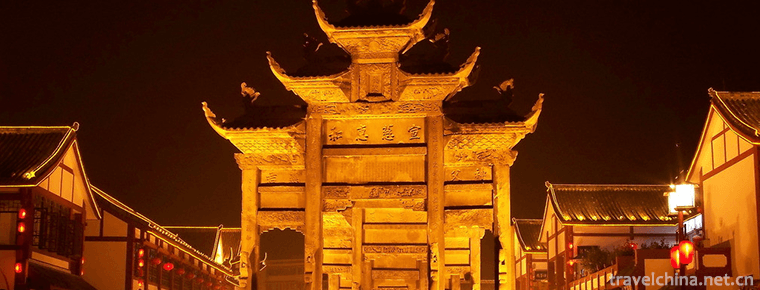
-
Wuxi film and television base
The Wuxi Film and Television Base of CCTV was originally built by CCTV to shoot "Tang Ming Huang", "Romance of the Three Kingdoms" and "Water Margin".
Views: 160 Time 2018-12-06 -
Gongchangling Hot Spring Skiing Ground
Gongchangling Skiing Ground is located in Tanghe Scenic Area of Gongchangling, Liaoyang City, Liaoning Province. It covers an area of 100 hectares and is a national AAA-class tourist attraction..
Views: 109 Time 2019-01-12 -
Jilin Beidahu Skiing Ground
Jilin Beidahu Skiing Ground is located in Jilin Beidahu Development Zone, 53 kilometers away from Jilin urban area. Entering the ski resort, facing the Asian Games Village Hotel..
Views: 138 Time 2019-01-19 -
Qingdao Seaside Scenic Spot
Qingdao Seaside Scenic Spot is the first batch of state-level scenic spots announced by the State Council in 1982, and also the first batch of national AAAA-level scenic spots..
Views: 234 Time 2019-02-07 -
bir bala
Kazakh is a music-loving nation, known as "horses and songs are the wings of Kazakhstan". Folk songs play a very important role in Kazakh music. Where there is a felt room of Kazakh people, .
Views: 110 Time 2019-05-02 -
Jiang state drum music
Jiangzhou Drum Music, also known as Jiangzhou Big Drum, refers to the local folk popular Gong and drum music and percussion music in Xinjiang County, Shanxi Province..
Views: 247 Time 2019-05-05 -
Brown Fan Dance
On the day of the grand Brown fan dance festival, adult men gather in groups on a square with their own delicacies and rice wine every day, and hold a large-scale Brown fan dance activities by arrangi.
Views: 381 Time 2019-08-16 -
Wannan Medical College
Wannan Medical College is located in Wuhu, a famous historical city known as "the great port of the Yangtze River and the backbone of Anhui". It is close to the vast Yangtze River and gather.
Views: 138 Time 2019-11-19 -
Stir fried pork with salted vegetables
Stewed pork with dried plum is a famous traditional flavor dish in Shaoxing, Zhejiang Province. The main raw materials are dried plum and streaky pork. Dried vegetables absorb meat fat to remove astri.
Views: 460 Time 2020-03-18 -
Steamed pork with rice flour
Yuan Mei, a Qing Dynasty poet of steamed pork with rice flour, is a Jiangxi dish in Suiyuan food list. It belongs to a variety of cuisines in southern China (such as Sichuan, Chongqing, Hunan, Anhui, .
Views: 163 Time 2020-03-22

